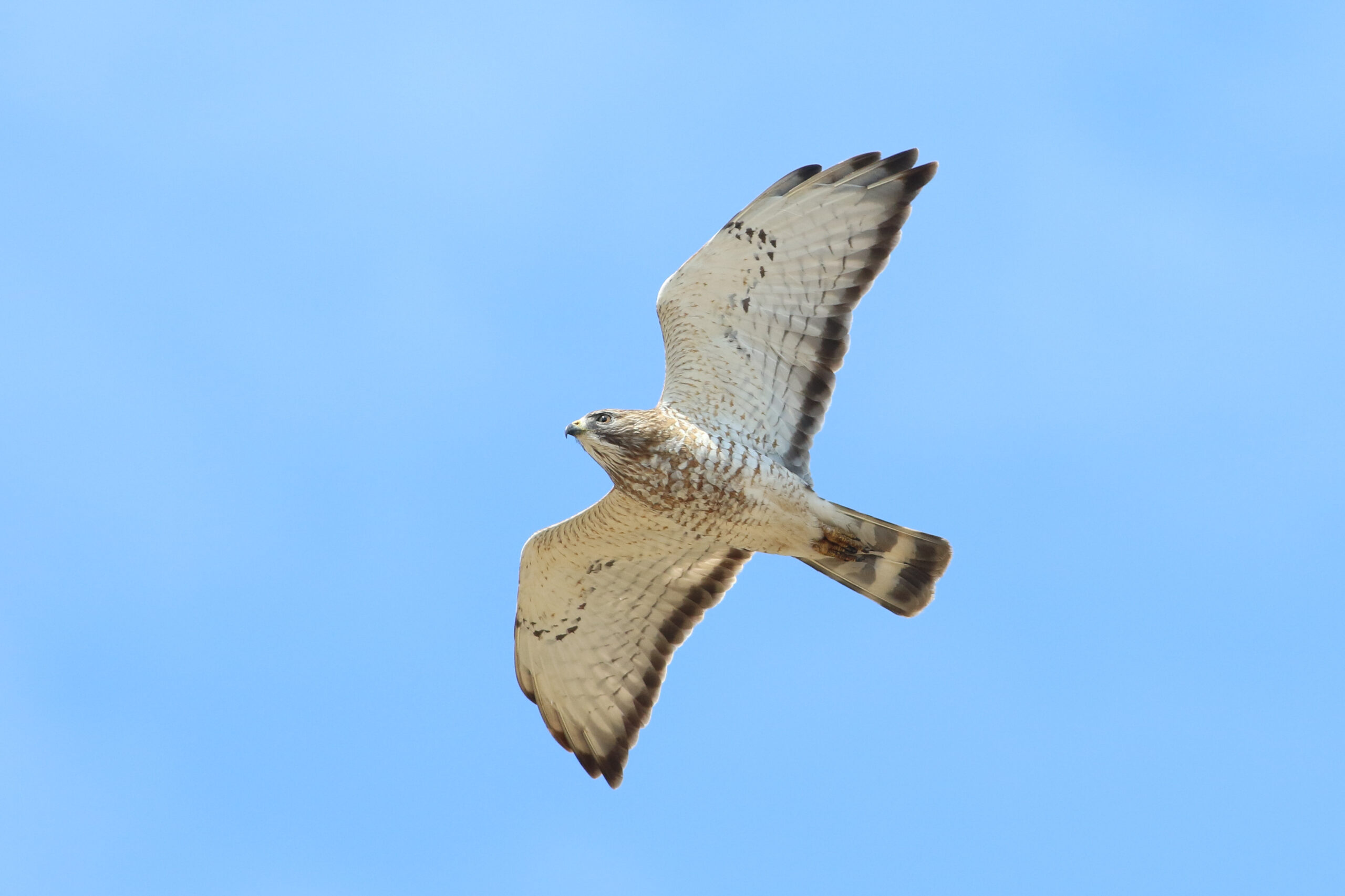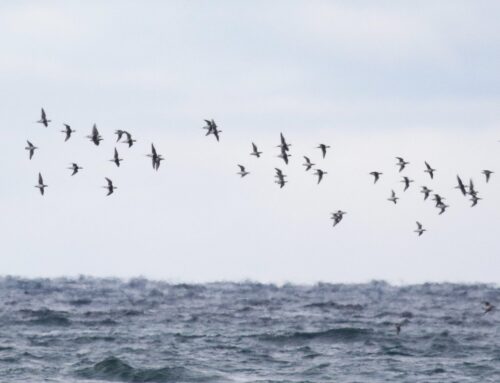The past week at the hawk watch was pleasant. Mid-May means warmer temperatures, diverse flights, and the arrival of breeding boreal songbirds. Spring-like conditions delivered consistent Sharp-shinned Hawk and Bald Eagle flights alongside dwindling numbers of buteos and falcons. It is rewarding and heartwarming to make it to the back end of a season, and I really enjoy these warm afternoons as young Sharpies drift by. Let’s dive into the stats!
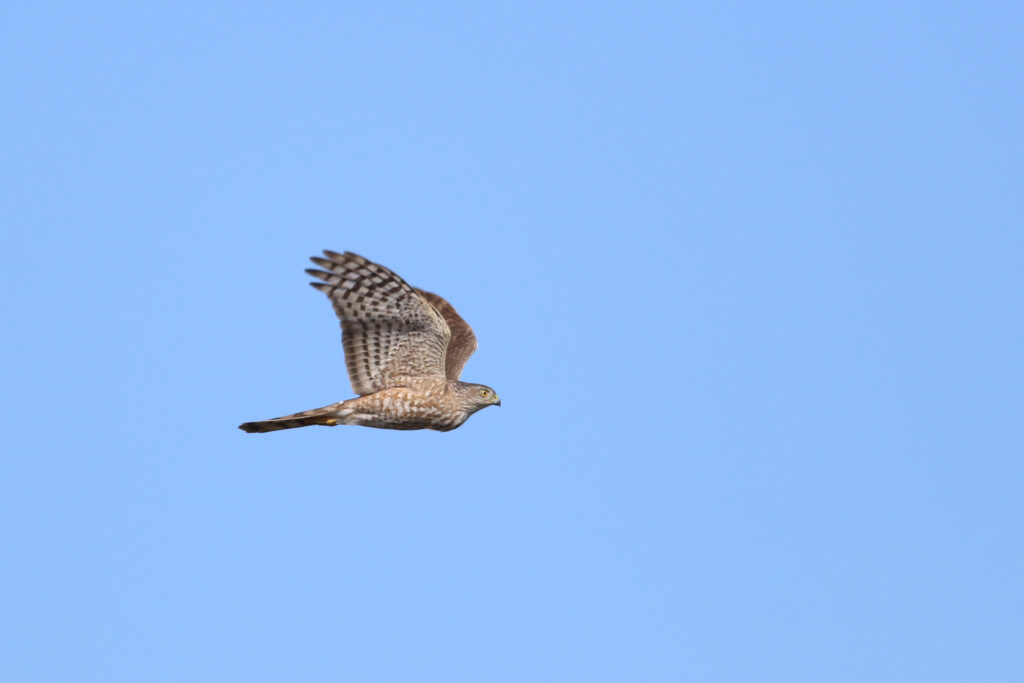
Sharp-shinned Hawk by Sean McLaughlin
Sharp-shinned Hawks are 90% second year birds now, and the best flight of the week occurred on the 15th, with 874. Just nipping at the heels of the day before, May 16th corralled up 701 ‘shins and 39 Bald Eagles! The current Bald Eagle seasonal total of 870 is a new record high. Northern Harriers have been less common but still are spotted in low numbers daily. There is typically a transition to young harriers in late spring (just like sharpies), but it seems there are a few adult males still kicking around. I’m not sure where these males are headed, but they may be non-breeders if they are still moving north at this time of year. The seasonal total of 717 Harriers is the second-highest season ever (with 2 weeks still to go!).
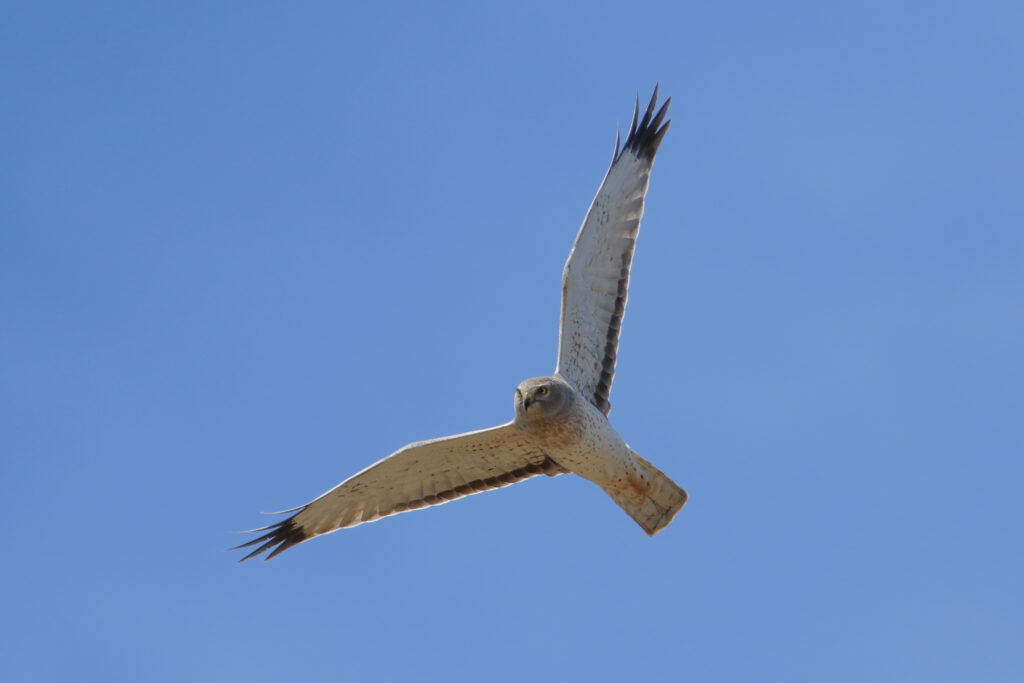
Northern Harrier by Sean McLaughlin
Falcons had a day on the 13th, 6 Peregrines and 13 Merlin! This was the second-highest single-day count of Merlins ever, dominated by young/female type birds. So why do all these young birds take so long to move north? The answer is evident when the dawn patrol of Merlins canvas the dunes in search of weary warblers. Young birds are still searching for an easy meal and often follow the largest movements of neotropical songbirds. Broad-winged Hawks continue to be mostly absent, and the best flight of the week was 78 on May 16th.
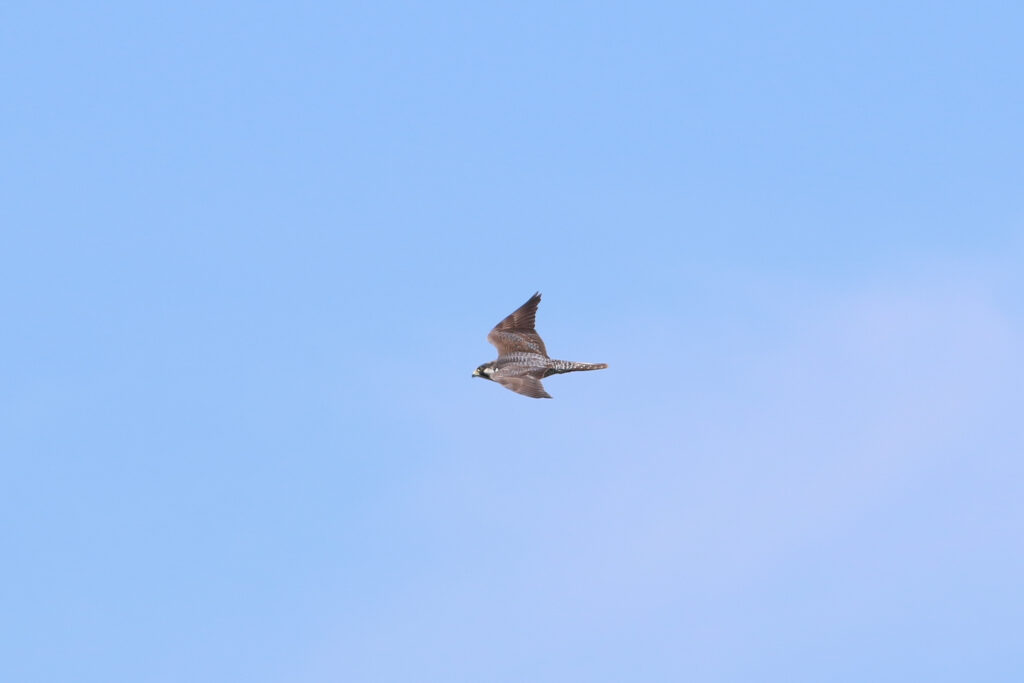
Peregrine Falcon by Sean McLaughlin
In the non-raptor department, here’s the starting lineup of rarities: Dickcissel, Red-headed Woodpecker, and American White Pelican. Coming off the bench as new arrivals to the scene: Philadelphia Vireo, Bay-breasted and Blackpoll Warblers, Blue-grey Gnatcatcher, Scarlet Tanager, and Cedar Waxwing. New birds are arriving daily, so that is just a slice of the 180(!) species documented at Whitefish Point this month.
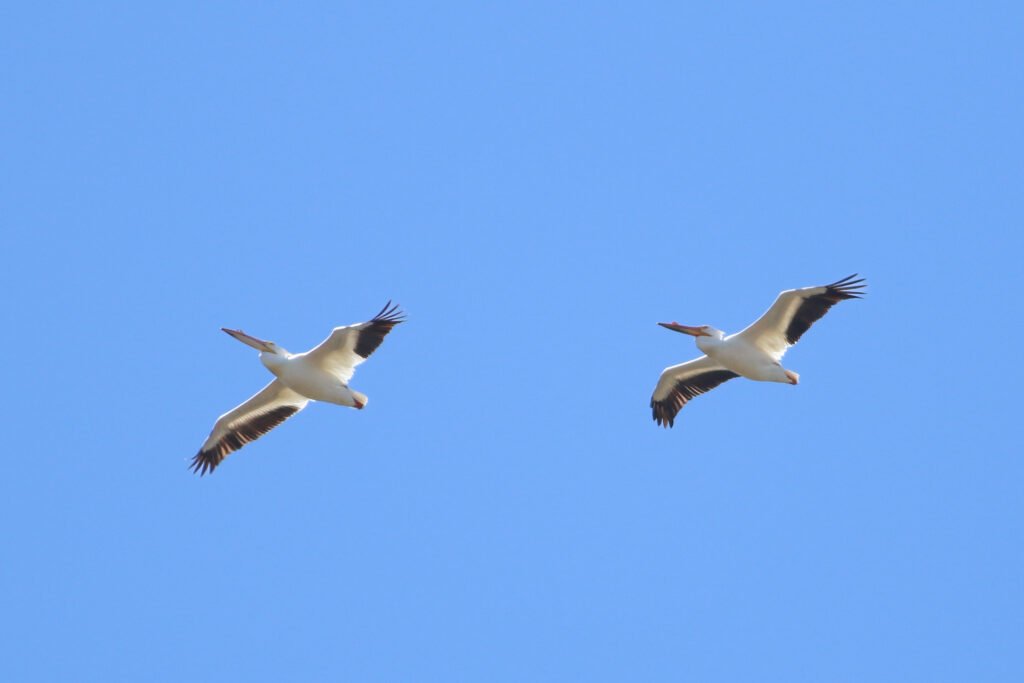
American White Pelicans by Sean McLaughlin
Raptor flights will probably begin to fade for the next week, but we can expect the arrival of young Broad-winged Hawks in force by the last week of May. In the meantime, there are warblers in the woods and birds in the bush! Hope to see you at the Point.
Sean McLaughlin, 2025 Spring Raptor Counter
Featured photo: Broad-winged Hawk by S McLaughlin
You can now see the raptor count data on Trektellen! Check it out at trektellen.nl/count/view/4562.
You can keep up with the 2025 Raptor Count by reading Sean’s weekly blog posts and following WPBO’s social media (Facebook, Instagram, and X). The raptor count runs March 15 through May 31.

Sean is a hawk watcher from Pennsylvania, and his passion for raptors began at an early age while visiting nearby count sites. He cut his teeth on the Appalachian Ridges of Stone Mountain and Tussey Mountain before heading to the North Shore of Lake Superior. Since 2022, Sean has conducted spring and fall raptor counts at Hawk Ridge Bird Observatory in Duluth, Minnesota. He is particularly excited to explore the other end of Lake Superior and a different array of spring migrants at Whitefish Point. Sean loves to watch visible migration of birds and has grown particularly interested in morning flight counts of migrating non-raptors. When not watching birds migrate, Sean enjoys fly fishing, gravel biking, and thinking about migration.

